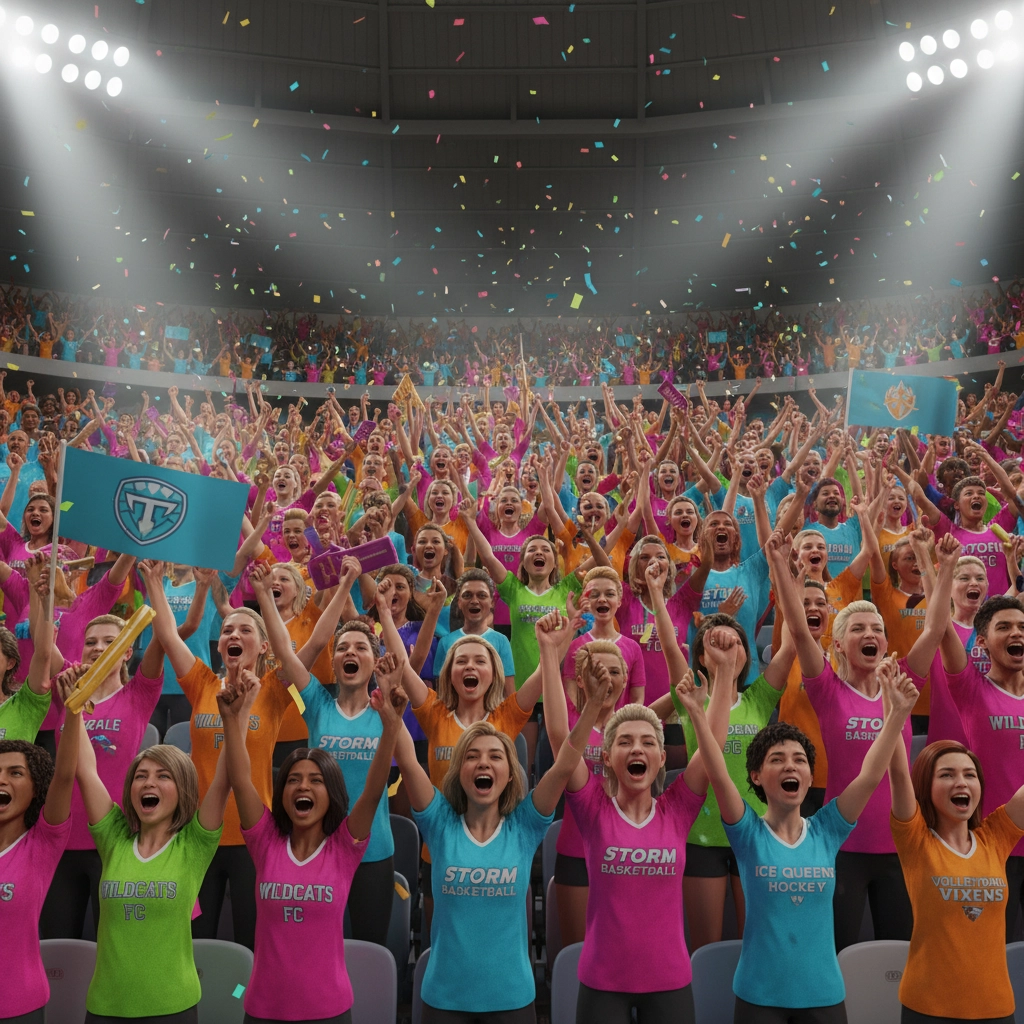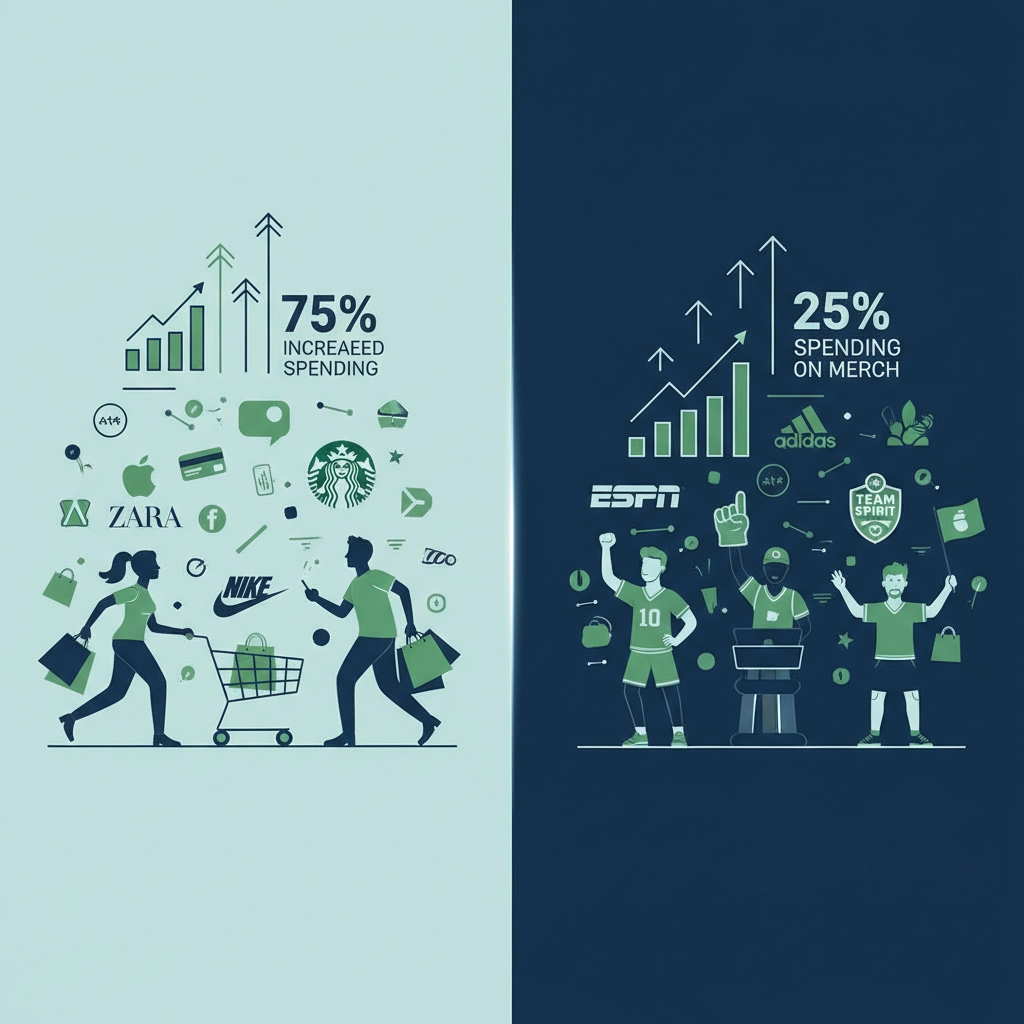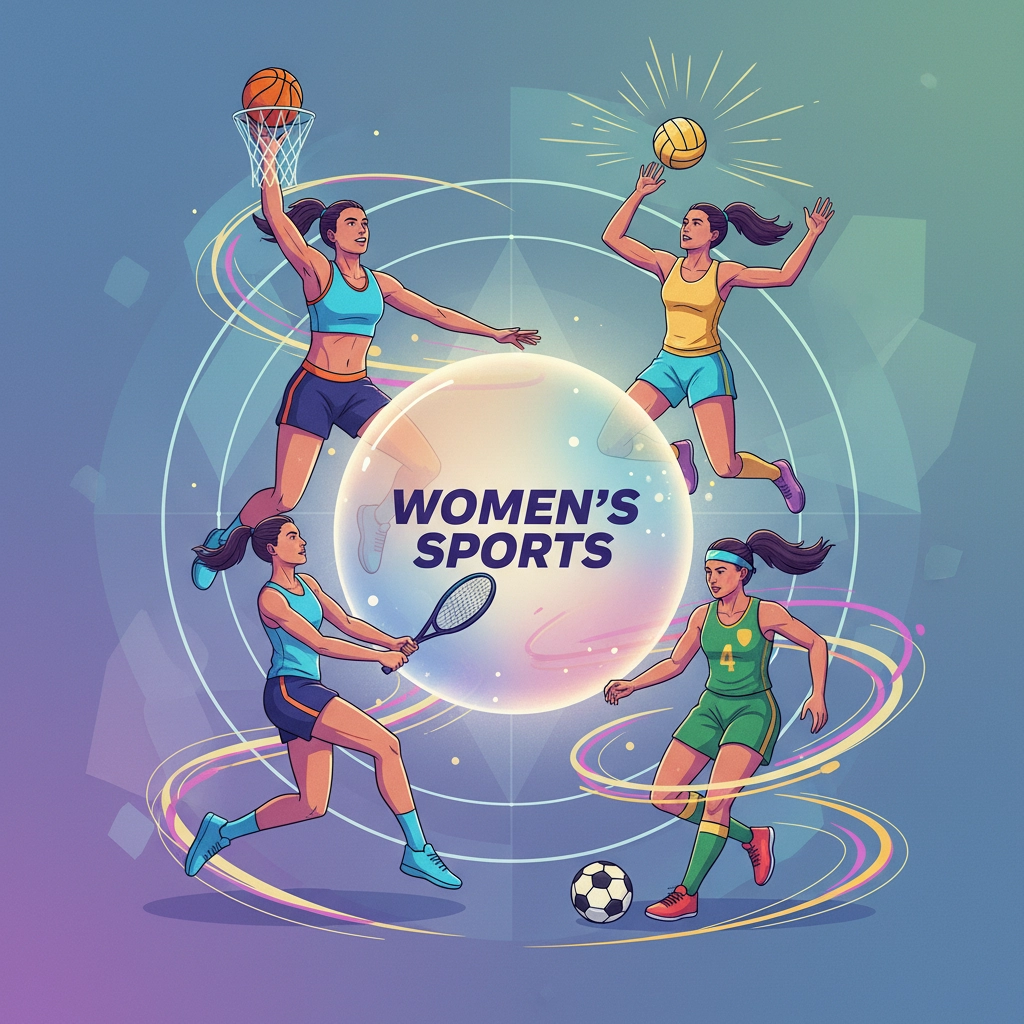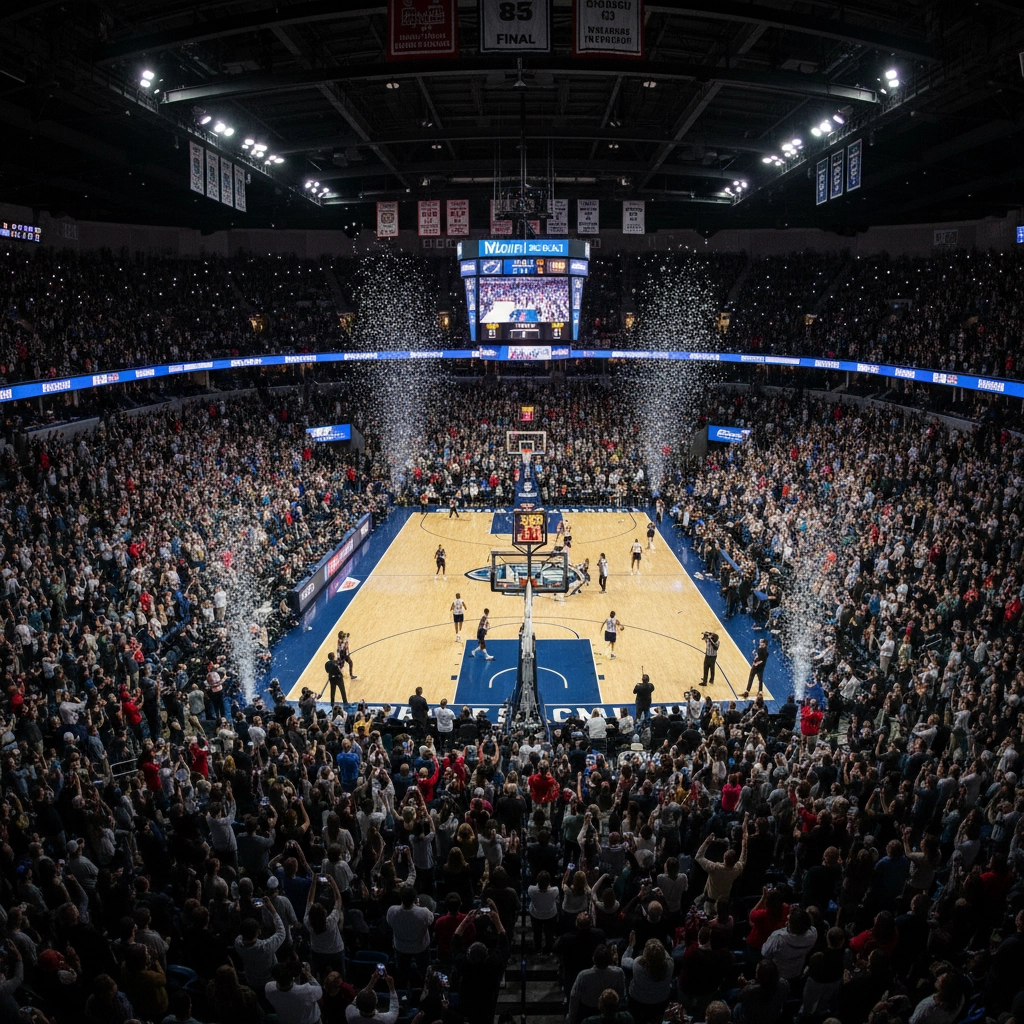The sports marketing world has a massive blind spot, and it's costing brands millions. While everyone's fighting over the same saturated men's sports audience, there's a goldmine hiding in plain sight: women's sports fans. These aren't just casual viewers – they're engaged, loyal consumers who spend more and remember brands better than traditional sports fans.
If you think women's sports is a niche market, you're already behind the curve. The data tells a completely different story, and smart brands are starting to take notice.
The Audience Is Bigger Than You Think
Here's the first surprise: women's sports fans aren't just women. A whopping 75% of men watch women's sports at least a few times per year. Even more interesting? Men are actually more likely to be frequent viewers, with 23% watching weekly or more compared to 15% of women.
This means when you sponsor women's sports, you're not targeting a narrow demographic – you're reaching a balanced audience that includes both male and female consumers across multiple age groups.
The growth numbers are even more compelling. About 54% of current women's sports fans started watching within the last three years. That's not gradual growth – that's explosive expansion of a market that's still in its early stages.

They Buy More, Remember More, Trust More
Women's sports fans don't just watch differently – they shop differently too. And the differences strongly favor brands smart enough to invest in this space.
Superior Purchase Intent
The purchasing behavior of women's sports fans puts traditional sports marketing to shame. Overall, 32% of women's sports fans are more likely to purchase from brands supporting women's sports. For female fans specifically, that number jumps to 44%.
But here's where it gets really interesting: women's sports fans are 25% more likely to purchase sponsor brands compared to men's sports fans. Your advertising dollar simply goes further with this audience.
Better Brand Recall
This might be the most valuable stat of all: women's sports fans are nearly twice as likely to recall brands they've seen in women's sports compared to men's sports fans. In marketing terms, this is gold. You're not just getting exposure – you're getting remembered.
When 50% of women's sports fans are more likely to buy brands that teams or athletes use, and 63% are more likely to notice sponsor brands, you're looking at an audience that actually pays attention to your marketing efforts.
Trust in Athlete Endorsements
Women athletes have a credibility advantage that most marketers don't realize. Women's sports fans are 2.8 times more likely to purchase products recommended by female athletes versus other influencers. Female athletes also enjoy a 7-point trust advantage over male athletes when it comes to product endorsements.
This creates a unique opportunity for authentic partnerships. Instead of fighting for expensive deals with oversaturated male sports stars, brands can build genuine relationships with female athletes who have more influence over their audience's purchasing decisions.

The Values-Driven Purchasing Decision
Understanding why people watch women's sports helps explain why they buy differently. The top motivations include supporting women (41%), appreciating quality play (33%), following individual athletes (32%), and finding the sport exciting (29%).
These aren't casual entertainment choices – they're deliberate decisions rooted in values and genuine interest. When fans are motivated by supporting women and quality athletics, they naturally gravitate toward brands that share these values.
This creates a marketing environment where authenticity matters more than flashy campaigns. Fans can spot genuine support versus opportunistic marketing, and they reward brands accordingly.
Sport-First, Team-Second Loyalty
Women's sports fandom has a unique structure that creates broader marketing opportunities. Unlike traditional sports where team loyalty dominates, women's sports fans often identify with the sport category first, then develop team preferences.
This means a brand sponsoring women's basketball or soccer can build recognition across all teams and leagues within that sport. You're not just reaching fans of one team – you're accessing the entire sport's audience.
Half of avid women's sports fans are loyal to specific athletes, and these engaged fans are 27% more likely to purchase from brands that endorse popular female athletes. When 70% of avid fans plan to spend more on attending events, you're looking at an audience with both intent and ability to purchase.

Digital Engagement Across Platforms
Women's sports fans are highly active on social media, but their platform preferences vary by age. Instagram leads with 61% of followers, Facebook captures 43%, YouTube reaches 38%, and TikTok connects with 27% (much higher among younger fans).
This multi-platform engagement means brands can create comprehensive digital strategies without putting all their budget into one channel. The audience is there – they're just spread across different platforms based on their demographics and preferences.
The social media activity also creates opportunities for user-generated content and viral marketing moments. When fans are actively posting about games, athletes, and brands, organic reach becomes a significant multiplier for paid campaigns.
The Market Growth Numbers
The recent attendance and viewership records prove this isn't a niche market anymore. The 2024 NWSL Championship drew nearly 968,000 viewers on CBS primetime. The 2024 NCAA Women's Basketball Championship set an all-time attendance record with over 436,000 fans.
These aren't experimental numbers – they're mainstream television and live event figures that prove advertiser interest is justified by actual audience size.
The growth trajectory shows no signs of slowing. With 28% of fans watching more this year than last year, and strong engagement among the valuable 18-34 demographic, early brand investments are likely to pay long-term dividends.

What This Means for Your Brand Strategy
The data makes a clear case: women's sports fans represent a superior marketing audience. They remember brands better, purchase more frequently, trust athlete endorsements more readily, and make values-driven purchasing decisions.
For brands looking to diversify beyond saturated men's sports markets, women's sports offers engaged audiences, growing viewership, authentic partnership opportunities, and measurable returns on investment.
The question isn't whether women's sports fans buy more – the data proves they do. The question is whether your brand will recognize this opportunity before your competitors do.
Smart marketers are already shifting budgets. The brands that move first will build relationships with athletes, leagues, and fans before the market becomes as competitive and expensive as traditional sports sponsorship.
The audience is here, they're spending money, and they're actively looking for brands that support what they care about. The only question left is: are you ready to meet them where they are?
